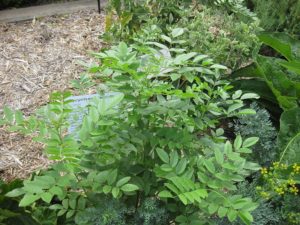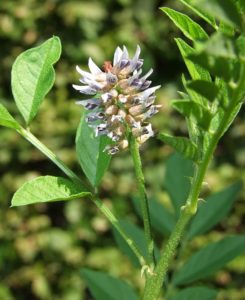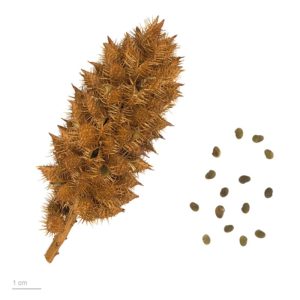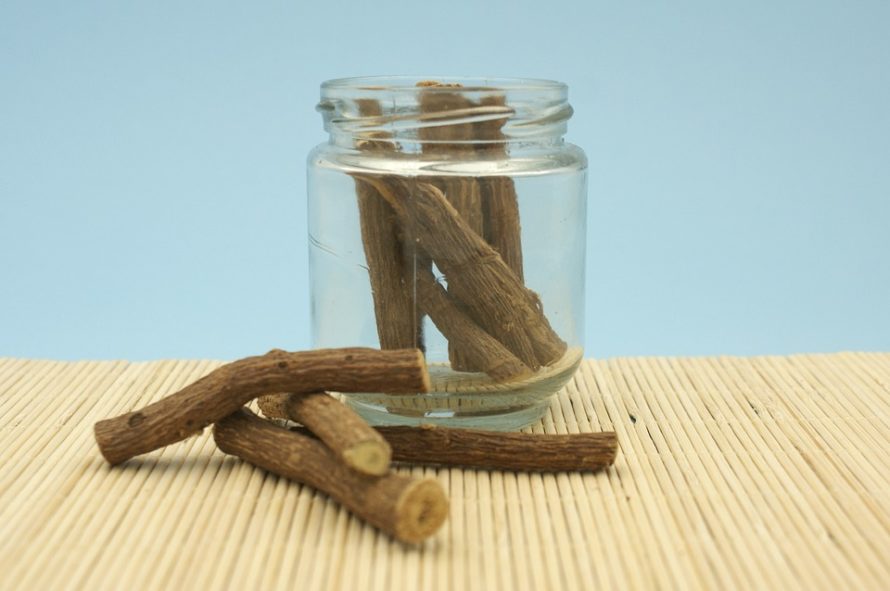
Licorice Plant
Licorice (Glycyrrhiza glabra) is made from the root of a perennial legume that is native to Southern Europe and Asia. It has been in use since ancient times, both as a medicinal and a culinary herb.
The Egyptians placed so much value on it that they buried it with their pharaohs. Roman soldiers introduced licorice to Northern Europe as the Roman Empire spread. They believed that chewing it would increase their stamina.
Licorice has traditionally been used to treat digestive issues such as such as upset stomachs and indigestion. European colonists brought the root with them when they settled the Americas and introduced it to the Native Americans who used it to treat women’s issues. In Ayurvedic medicine, it is used to treat a number of diseases. Modern science shows that the root has no medicinal value.
Licorice has long been recognized for its sweetness. It is 30 to 50 times sweeter than sugar but without causing tooth decay. In sweets, it is often supplemented by aniseed oil. The root alone has been sold to chew on. There is a danger to consuming too much licorice. The same ingredients that give it its characteristic flavor can cause edema (water retention), low potassium, hypertension (high blood pressure) and weight gain or loss. It is recommended that you eat no more than 2.5 to 5 ounces of licorice per day.

Licorice Flowers
Licorice is only hardy in zones 7 through 11. Elsewhere it is grown as an annual or in containers that are brought indoors in the winter. If you plan on growing this herb, be sure to give it enough space. It will grow to 5 feet in height and 2 feet in width. It requires full sun and good drainage. The flowers resemble pea flowers and are usually lavender or white. The plants bloom throughout the summer. The resulting seed pods contain 2 to 5 seeds.
The roots are usually harvested in the fall after 3 to 4 years growth. Use a garden spade to carefully lever the roots out of the soil. Make sure that you get the entire root. Like horseradish, any pieces of root left in the soil will germinate into new plants. The roots take several months to dry.

Licorice Seeds
You can grow licorice from seed either by direct sowing the seeds in your garden in the fall for spring germination or by starting them indoors. If you are starting your seeds indoors, they will need to be cold stratified because they need a period of cold to germinate. Cold stratification mimcs winter weather. If you skip this step only about 20% of your seeds will germinate. With stratification, germination will be closer to 90%.
To cold stratify, dampen a piece of paper towel and place the seeds in a single layer on it. Fold it over, completely covering the seeds and place it in a plastic bag so that it doesn’t dry out. Place the bag in your refrigerator for 2 months, checking it periodically to make sure that it is still damp. If the paper towel has started to dry, mist it to moisten it again. To shorten the stratification time, soak the seeds for 2 hours to soften the hard outer covering, then place them in your dampened paper towel. Cover with a bag and refrigerate for 3 to 4 weeks.
After stratification, sow the seeds in soil, lightly covered. Germination should occur in 2 to 3 weeks. You can transplant your seedlings outdoors when they are 3 to 4 inches tall and all danger of frost has passed.

